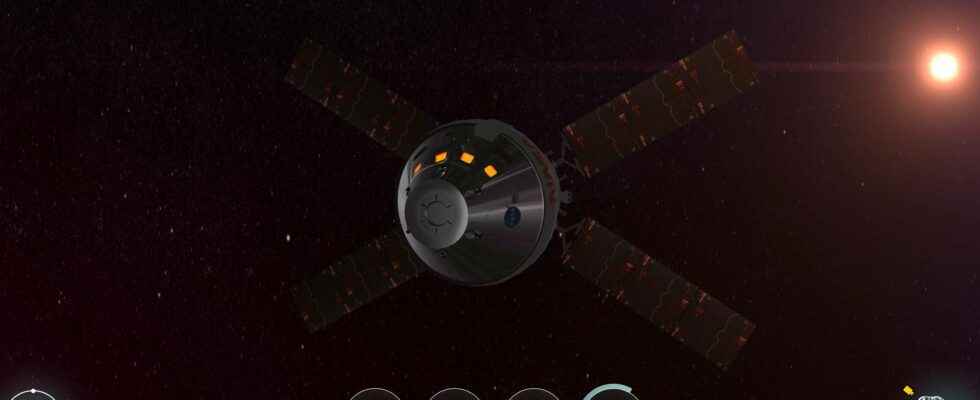NASA is preparing to launch the website Artemis Realtime Orbit (Arow) which will make it possible to follow in real time the flight of the Orion vehicle. Accessible to all, it will provide a set of data, from its launch to its return to Earth and its mission around the Moon.
You will also be interested
While waiting to see take off on September 3 the mission Artemis I bound for the MoonNASA must put the site online Internet Artemis Realtime Orbit (Arow) which will make it possible to follow the entire mission in real time.
Thanks to Arow, anyone with Internet access will be able to locate the Orion vehicle and track its distance from Earth, its distance from the Moon and the duration of the mission, for example. But not only: Arow will provide a whole bunch of other information like Orion’s speed, temperature, distance and elapsed time of the mission. Flight path data, called ephemeris, will also be available. This information will be downloadable, and everyone is free to exploit and use it as they wish.
Experience the take-off of the SLS on Saturday 3 September with us live.
Mission data accessible to everyone
Arow will use the data collected by the sensors from Orion and sent to NASA’s Johnson Space Center Mission Control Center in Houston during the flight. It will provide periodic real-time data from approximately one minute after lift-off until the separation of the upper stage ICPS (intermediate cryogenic propulsion stage) about two hours after the start of the flight. Once Orion flies under its own power, i.e. powered and piloted by the ESM service module of the’European Space AgencyArow will provide constant information in real time.
” It’s a very effective way to participate in the mission and understand the magnitude of what Nasa is trying to accomplish with Artemis I said Seth Lambert, the Orion programmer who created Arow. While the app was developed for Artemis missions, the technology that powers it could be applied to other missions in the future.
Interested in what you just read?
